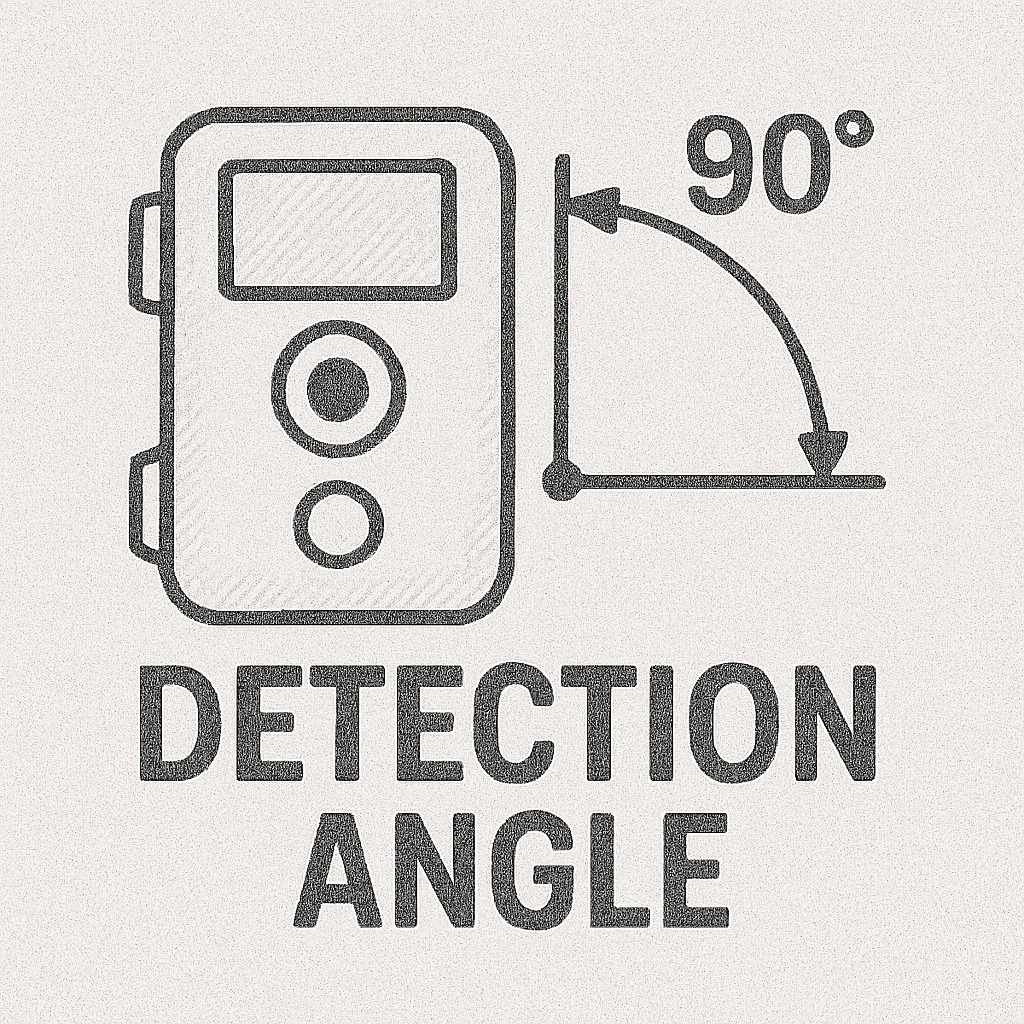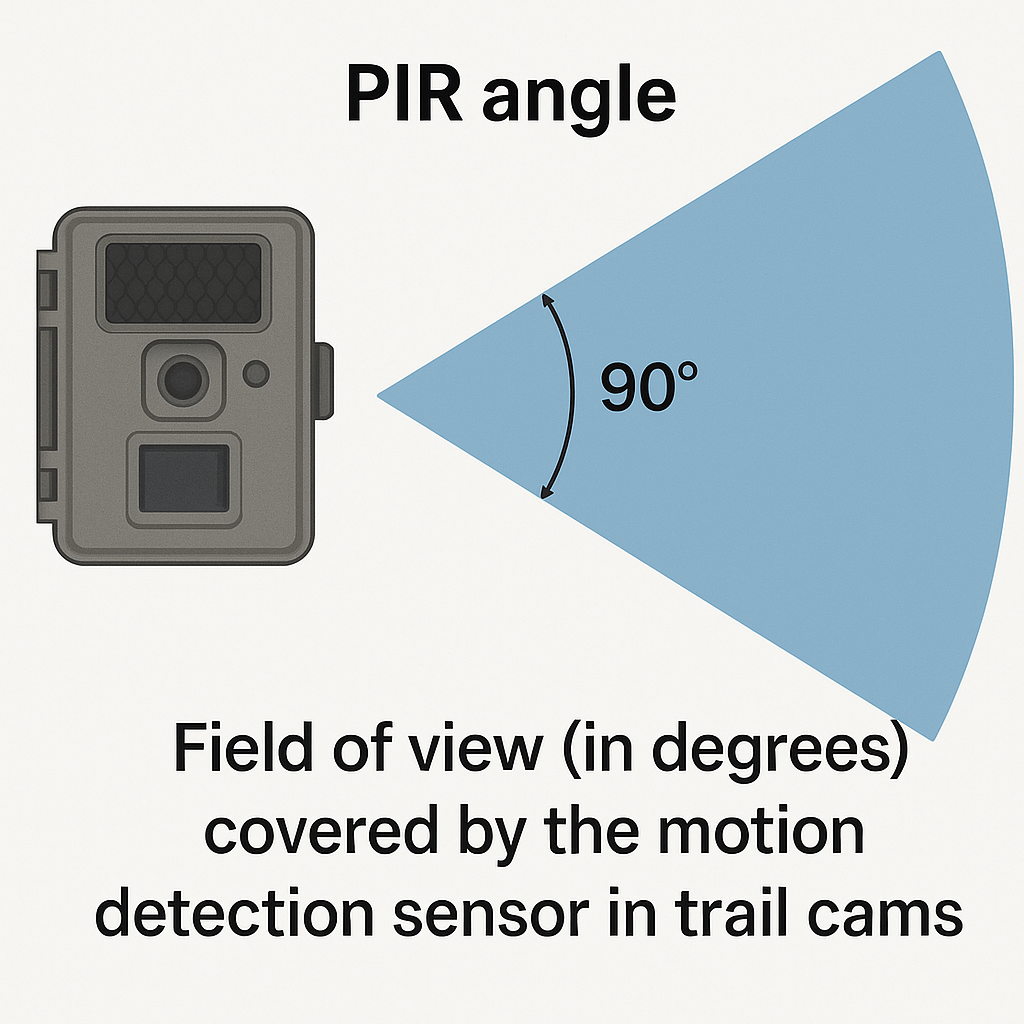
Detection Angle in Trail Cameras
Explore the concept of detection angle in trail cameras, including its impact on camera placement, field of view, and capturing wildlife effectively.
Glossary
The coverage area of a Passive Infrared (PIR) sensor in terms of its horizontal and vertical fields of view, critical for motion detection accuracy.
The sensor angle, also known as the detection angle, refers to the angular field of view within which a Passive Infrared (PIR) sensor can detect motion or changes in infrared radiation. This critical parameter is essential in devices like trail cameras, security systems, and lighting automation systems.
The PIR sensor relies on the Fresnel lens and its internal design to determine its detection angle. This angle can be divided into two components:
Understanding the sensor angle enables users to optimize the sensor’s coverage area effectively, whether for monitoring wildlife trails, securing a property, or automating lighting in offices.
| Parameter | Typical Range |
|---|---|
| Horizontal Detection Angle | 90° to 180° |
| Vertical Detection Angle | 40° to 60° |
The sensor angle determines the spatial area that the PIR sensor can monitor. This is crucial for:
For instance:
Effective placement of sensors relies on understanding the detection angle:
Some sensors offer features to tailor detection angles:
Fresnel Lens:
PIR Sensor:
Mounting Height and Placement:
Environmental Factors:
A trail camera equipped with a 90° horizontal angle and a 50° vertical angle is ideal for monitoring wildlife on trails. This configuration minimizes false triggers from irrelevant movements, such as swaying branches.
A PIR sensor with a 120° horizontal angle and a 40° vertical angle is mounted in a hallway. This setup ensures that motion across the hallway is detected efficiently while ignoring motion on adjacent floors or rooms.
A ceiling-mounted PIR sensor with a 360° horizontal angle provides full coverage in an open-plan office. This placement ensures consistent lighting activation without missing any corner of the room.
A PIR sensor with a 180° horizontal angle and a 60° vertical angle monitors a parking lot. This setup ensures wide coverage of the area while minimizing false alarms from objects beyond the lot.
Physical Masking:
Swivel Mounts:
Fresnel Lens Replacement:
Select the Right Sensor:
Avoid Blind Spots:
Minimize False Alarms:
Regular Maintenance:
The sensor angle, or detection angle, is a fundamental aspect of PIR sensor functionality. Proper understanding and adjustment of these angles ensure optimal performance, whether for wildlife monitoring, home security, or lighting automation. By selecting the right detection angle and customizing the coverage area, users can minimize false triggers and achieve reliable, efficient operation of their PIR sensors.
Explore our range of high-performance PIR sensors with customizable detection angles for your specific needs.
The sensor angle, also known as the detection angle, defines the horizontal and vertical angular range within which a PIR sensor can detect motion or changes in infrared radiation.
Horizontal angles often range from 90° to 180° and determine side-to-side coverage, while vertical angles are narrower (typically 40° to 60°), focusing on height-based motion detection.
Sensor angle is crucial for selecting and positioning PIR sensors to ensure accurate motion detection, minimize blind spots, and reduce false alarms in specific applications like security or lighting controls.
Sensor angles can be adjusted using physical masking, swivel mounts, or by replacing the Fresnel lens to customize detection zones and focus on specific areas.
PIR sensors with appropriate detection angles are used in home security, lighting automation, wildlife monitoring, and parking lot surveillance to ensure coverage of the desired area.

Explore the concept of detection angle in trail cameras, including its impact on camera placement, field of view, and capturing wildlife effectively.
Explore the concept of PIR Angle in trail cameras, its significance in motion detection, and how it impacts wildlife monitoring, hunting, and security applications.
